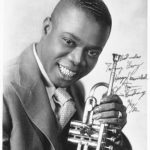How African Americans Crafted Jazz
Like all other forms of Black expressions, music reflects the kind of life that African Americans led during a specific time. For instance, the work songs and field howls reflect the conditions of servitude. On the other hand, the jubilee songs reflect the reconstruction era, while the blues reflect the improbability of reconstruction and depression. Similarly, jazz was brought up during the Harlem Renaissance and an expression of freedom.
Jazz is used to define a style of music developed mainly by African Americans during the 1920s. Although the term jazz is synonymous with Africans, no one is sure of the origin of the word. Nonetheless, musical enthusiasts used the term jazz to denote something different. Many African Americans rejected it since they were not the ones who came up with the word; they felt that if they continued to call music jazz, they were accepting other derogatory terms. For instance, prominent musicians such as Archie Shepp and Max Roch pointed out the term jazz signified exploitation of African American musicians.
Jazz enthusiasts mainly used the word jazz, while critics called it Avant-jazz: whereas the individuals who introduced the style of music called it “the new black music.” Irrespective of the name chosen, jazz was much different from everything before it, which created a lot of controversy in the music world. Many people believed that jazz was a form of exploiting the black community. They also felt that jazz was a ploy devised to divide African Americans so that it would not be easy for blacks to come together and agitate for freedom from the chains of oppression in the music industry.
Great musicians such as Lee Morgan felt that jazz was an impediment to the publicity accorded to music. Some people preferred to call it a mixture of black music since they felt that the music represented the black struggle for recognition. For many middle class, educated blacks, jazz was considered low class and “devil’s music”. Racism also supplemented the term jazz. Many felt it was illegitimate music, it lacked artistic value, and they figured that such forms of music was suitable to be performed in places such as nightclubs instead of concert halls. Later, jazz became the influence for most African American writing after WW2 when music was acknowledged as an art form. One example of jazz literature is The Invisible Ma. In addition to this, jazz was also used during the 60s by jazz writers to write about race solidarity, which shows jazz as being a form of expression used by African Americans.



Jazz was largely the creation of African Americans as they have figured disproportionately among the major innovators of this musical expression. The industry was made up of African American performers and the whites who mostly constituted the critics, writers, venue and record company owners who described, analyzed, promoted, publicized, recorded, and distributed this music. This made it easy for them to steal African Americans styles and flows. As stated previously, Jazz was more than just music; at the height of its influence, jazz was a cultural movement, associated with influencing the fashion, language, and the arts. Jazz has always been an urban music, tied to urban nightlife, prohibition, vice zones, dance halls, inner city neighborhoods, and concert stages. Its history coincides not only with the urbanization of America itself but particularly with the urbanization of African Americans. This makes jazz more than just music it was apart of a whole movement.

